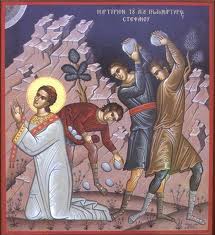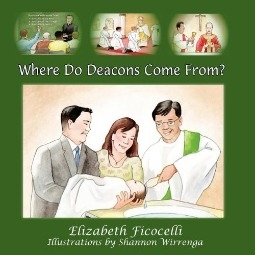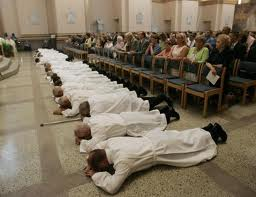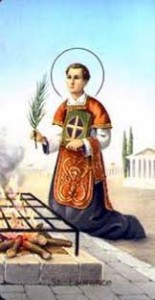 Today we celebrate the feast of St. Stephen. Not only was he one of the first deacons in the Church (cf. Acts 6:1-6), but he’s also the first recorded post-Resurrection martyr for Christ.
Today we celebrate the feast of St. Stephen. Not only was he one of the first deacons in the Church (cf. Acts 6:1-6), but he’s also the first recorded post-Resurrection martyr for Christ.
Sometimes martyrdom may some far removed from our own comfortable existence. To counter such a mindset, we offer the following reflection from Servant of God John A. Hardon, the founder of the Institute on Religious Life, who tells us why the present age is truly the “age of the martyrs.” This is taken from a conference he gave on the Precious Blood of Christ.
We believe that by His death on the cross, Christ merited all the graces we need to reach heaven. He won all the graces necessary for our salvation. He gained all the graces that the human race needs to reach its eternal destiny.
But we also believe that what Christ did by dying for us on the cross requires that we die on our cross by cooperating with the graces that Jesus won for our redemption. He could not have been more clear. He told us, “If you wish to be my disciples, take up your cross and follow me.” We must cooperate with Christ’s grace if we wish to join Him in eternity. He was crucified by shedding His blood. We must be crucified by shedding our blood in witness to our love.
All of this is elementary Christian teaching. The Precious Blood of Christ does indeed provide us with the light and strength we need to reach heaven. But we have to do our part, otherwise Christ’s passion and death on Calvary would have been in vain.
The focus of our conference is on the Precious Blood of Christ in the age of martyrs. What are we saying? We are saying that the present century is the age of martyrs par excellence. Ours is THE (all three letters capitalized) age of martyrs.
No words of mine can do justice to this statement: We are inclined to think that martyrs are those ancient men and women in the first centuries of the Church whom we commemorate by name in the first Eucharistic Prayer, when we say, “We honor the apostles and martyrs,” and then name after the apostles, “Linus, Cletus, Clement, Sixtus, Carnelius, Cyprian, Lawrence, Chrysogonus, John and Paul, Cosmas and Damian.”
Unless we take stock of ourselves, martyrs are not commonly associated with the later history of the Church, and certainly not with our own times. What a miscalculation!
A conservative estimate places the total number of martyrs who died for Christ up to the liberation edict of Constantine in 313 A.D. at around 100,000. We call that period of massive persecution the age of martyrs. Yet, the number of Christians who have died for their faith since 1900 is several million. In the Sudan alone, during the 1950s, over two million Catholics were starved to death by the Muslims because they refused to deny that Mary is the Mother of God since her Son is the Ibn Allah, the Son of God. There have been more Christian martyrs since the turn of the present century than in all of the preceding centuries from Calvary to 1900 put together.
It is no wonder that the Second Vatican Council in its Constitution on the Church went out of its way to identify martyrdom as one of the marks of holiness in our day. The passage deserves to be quoted in full: Continue reading The Age of Martyrs


 Today is the feast of
Today is the feast of  Earlier this month, fittingly on June 9th, the feast of the holy deacon
Earlier this month, fittingly on June 9th, the feast of the holy deacon